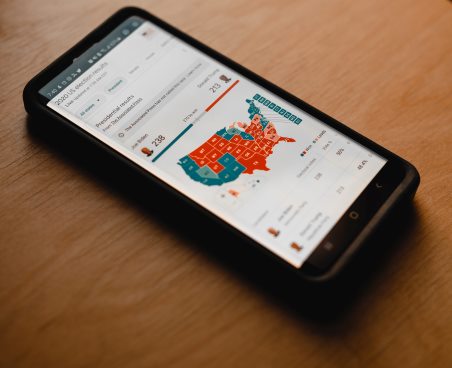
Photo by Clay Banks on Unsplash
As election officials counted votes from the 2020 election, political pundits analyzed mistakes and successful tactics of opposing political campaigns. PR and marketing experts meanwhile analyzed the election for lessons that can be applied to PR and marketing. Here are a few:
Surveys can Misinform
Polls were drastically inaccurate. Why? Accurate surveys require a large enough representative sample and a large enough sample size of any particular cohort, points out Katie Delahaye Paine, CEO of Paine Publishing LLC and publisher of The Measurement Advisor. Disdaining the mainstream media, Trump supporters tended to avoid pollsters. In addition, more people in general now avoid answering unknown callers. Educated people were more likely to follow political news and respond to pollsters. As a result, survey sample sizes were skewed and too small.
Communications professionals frequently circulate surveys that garner an insufficiently small number of responses — too few to draw reliable conclusions. “Now we’ve all been there. You put out a survey, send a bunch of reminders, and still only end up with 100 responses,” Paine says.
There are a few possible yet inadequate options to the problem: ignore invalid data, draw whatever conclusions you can, include plenty of caveats, or resend the survey.
Human Nature Can Mislead
As television networks tallied election results, they interviewed analysts who saw the same vote totals but presented different reports and conclusions. Why? People tend to see what they want or expect. That’s human nature.
“While you might not be able to stop yourself, you can be conscious of this trap and do your best to avoid it,” writes Lisa Hirst Carnes for ArcStone. “That means not assuming customers will respond to a certain type of content, or that your messaging is working if conversions are happening.”
Drawing conclusions just because they fit your existing preferences or assumptions leads to faulty decisions. Instead, examine the numbers and follow their lead rather than trying to shape them into a direction that makes you feel more comfortable.
A Common Enemy is Your Best Friend
Fighting a common enemy works. In 2016, Trump won by largely focusing on dislike of Hilary Clinton, built up over her decades in the public limelight. This year, Democrats featured hatred of Trump as their main campaign theme.
Almost every brand, product, and company has the opportunity to position themselves in opposition to something or someone else, says Rand Fishkin, CEO and co-founder of SparkToro. Their conflicts need not be as nasty as political battles. Gatorade made “thirst” and “losing” its enemies. Facebook fought loneliness and disconnectedness.
“No matter what you do, it’s worth evaluating if there’s a common enemy (even if it’s just an ‘old way of doing things’) that can help you stand out from the crowd to create passionate customers and supporters,” advises Fishkin, former CEO of Moz.
Demographic Segmentation Alone is Inadequate
Pollsters and pundits divided voters by gender, age, ethnicity, and education level. Those broad demographics oversimplified the wide range of attitudes and behaviors, leading analysts to commit major blunders, Fishkin says.
More Black men than expected voted for Trump. Jewish voters shifted to Trump. White evangelicals shifted to Biden. White voters without college degrees shifted to Biden. Most significantly, large segments of Latinos supported Trump.
Marketing campaigns that target audiences based on demographics alone will produce shoddy results. For better data, also research customer psychographics (lifestyle, values, interests, attitudes, personality traits) and behavior (product usage, sources of influence, social media use, what people search for, and where they go). Deeper data and insights produce better results.
Bottom Line: PR and marketing professionals can learn many lessons from the 2020 presidential elections.
Schedule a Free Online Demo of the Glean.info Media Monitoring & Measurement Dashboard
William J. Comcowich founded and served as CEO of CyberAlert LLC, the predecessor of Glean.info. He is currently serving as Interim CEO and member of the Board of Directors. Glean.info provides customized media monitoring, media measurement and analytics solutions across all types of traditional and social media.




